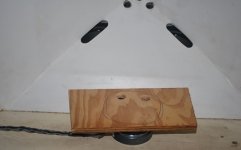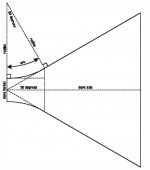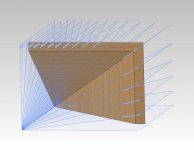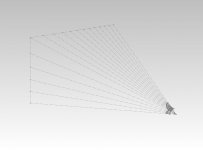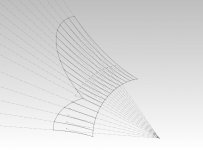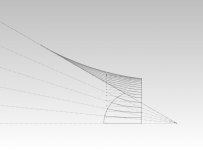I Today I test violin trough Aura drivers -(I got Synergy horn with them) and it sound compressed.
Just the Aura's or did you listen to the full system?
sheldon
Full Synergy system. (bwaslo version) Then I compare to Grundig (and Isophon after) 10" OB with pro ribbon on top. Synergy sound very... right. But German vintage widerange transdusers has more overtones and those micro tiny details like... Lingering vibration of the string. And it sound so open and natural. Unbelievable voices and instruments! But the sweet spot is very narrow - total opposite to Synergy.Just the Aura's or did you listen to the full system?
sheldon
Full Synergy system. (bwaslo version) Then I compare to Grundig (and Isophon after) 10" OB with pro ribbon on top. Synergy sound very... right. But German vintage widerange transdusers has more overtones and those micro tiny details like... Lingering vibration of the string. And it sound so open and natural. Unbelievable voices and instruments! But the sweet spot is very narrow - total opposite to Synergy.
Today I tested Celestion TF0410MR and I got what I missed -AIR! So there is a driver limitation in those little Aura. May be low sensitivity I don't know. But with those Celestion I got liveliness back. Just my IMHO.
Now I should find a Synergy project to use them.
Attachments
Sergey are you on the DIY soundgroup forum?
Just wondering as I saw someone posting questions on Bwaslo's design. I looked at getting the Celestion mid you mentioned but they are not available. Might have to just try the 5" Mid from Celestion TF0510. Still have to decide on the CD also. Due to outrageous shipping charges I am limited to Beyma and 18 Sound CD's for value.
All in all this should be a fun journey.
Just wondering as I saw someone posting questions on Bwaslo's design. I looked at getting the Celestion mid you mentioned but they are not available. Might have to just try the 5" Mid from Celestion TF0510. Still have to decide on the CD also. Due to outrageous shipping charges I am limited to Beyma and 18 Sound CD's for value.
All in all this should be a fun journey.
Today I tested Celestion TF0410MR and I got what I missed -AIR! So there is a driver limitation in those little Aura. May be low sensitivity I don't know. But with those Celestion I got liveliness back. Just my IMHO.
Now I should find a Synergy project to use them.
You can't just mix and match drivers in a Synergy horn. Like Depeche Mode says, "everything counts." Just off the top of my head, these things count:
1) thiele small parameters of the woofers
2) volume of air under the cone
3) volume of air behind the cone
4) depth of the ports
5) diameter of the ports
6) shape of the ports
7) efficiency
I know it's fun to mix and match drivers, but without measurements it's a complete crapshoot. I've done it myself, so I know how tempting it is to just bolt something to a horn and cross your fingers, but it can lead to some conclusions that are incorrect. For instance, I dismissed the aurasounds myself, way back in 2006, but I was wrong. I was using a front chamber that was too large.
I'm just wondering how you came to your hood lens shape without the rounded corners?
Good question.
Here is a sketch from the Hughes paper. It shows that the horn throat radius (arc) should be tangent to the horn surface and normal to the driver exit. There is only one unique radius that satisfies those conditions in any plane drawn through the horn central axis.
Here is a set of construction planes drawn through the horn central axis. I only used 1/4 of the horn to take advantage of symmetry.
Working in each plane I constructed the "arcs" shown in the Hughes sketch. I matched the compression driver exit angle (7 degrees single sided). I also located the horn apex 10 mm into the driver throat to get the driver closer to the midrange ports. The ports can not move further into the horn. There must be sufficient horn area where they are located to not interfere with the compression driver output.
Here you can see more detail. The short construction lines match the driver exit angle. In each construction plane only one "arc" fits that is tangent to the horn and normal to the driver exit cone.
After lofting the surfaces along the "Hughes arcs" this is what results:
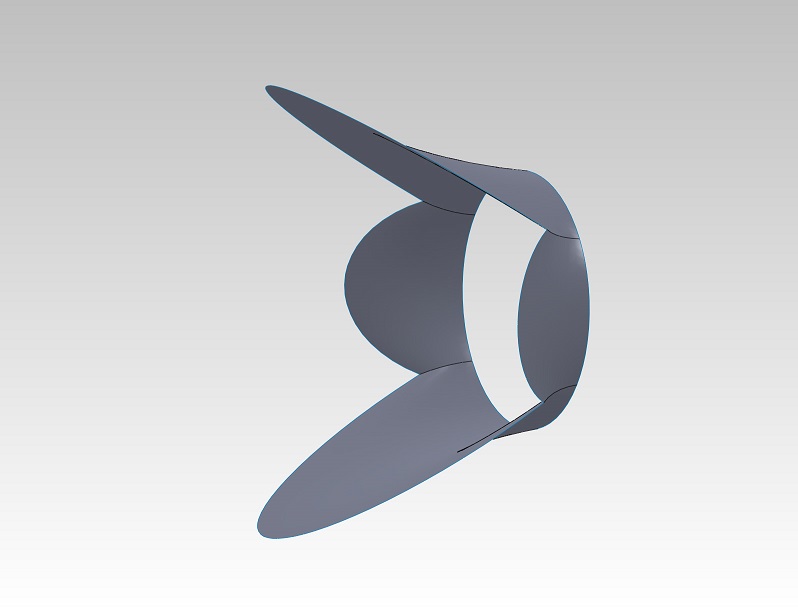
Attachments
You can't just mix and match drivers in a Synergy horn. Like Depeche Mode says, "everything counts." Just off the top of my head, these things count:
1) thiele small parameters of the woofers
2) volume of air under the cone
3) volume of air behind the cone
4) depth of the ports
5) diameter of the ports
6) shape of the ports
7) efficiency
I know it's fun to mix and match drivers, but without measurements it's a complete crapshoot. I've done it myself, so I know how tempting it is to just bolt something to a horn and cross your fingers, but it can lead to some conclusions that are incorrect. For instance, I dismissed the aurasounds myself, way back in 2006, but I was wrong. I was using a front chamber that was too large.
Patrick,
I'm aware about mix&match drivers in Unity/synergy. Tried that, got same "crap" result.
But I believe TD use those Celestion in original Synergy horns. And Synergy really have unique qualities that I don't see in any other type of systems. And I don't want to miss it.
It's looks like the only choices that I have - is just wait until TD will make some DIY home friendly version, or other guys with knowledge and measurement ability's will start a Synergy project. To develop such a project I'm willing to donate 8 Celestion drivers to developer.
Buy the way I'd like to say BIG thanks everybody involved in Unity/Synergy projects. TD, Bill (bwaslo) etc.
Really appreciate your time and support.
Sergey
So there is a driver limitation in those little Aura. May be low sensitivity I don't know.
Here is the Linkwitz Pluto users group forum link
Lovers of the tiny 2" AuraSound all alone on top of this weird speaker invented by Siegfried.
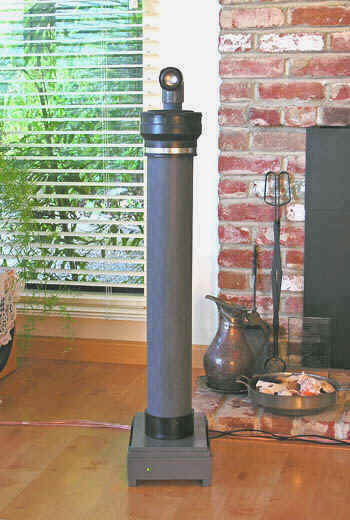
To develop such a project I'm willing to donate 8 Celestion drivers to developer.
I have a dozen Celestion TF0410MR's that I bought from Paul incase he ever gets his Synergy horn kits completed. I got tired of waiting so I decided to try and build something better myself. Some day I'll do a comparison.
Send them to Red Spade. He is in the middle of it.

And another guy trying the Celestion Mid: Mike Seddon
Last edited:
......or although not synergy in principle, a horn where the mid driver is at the throat and the HF components on the walls.....has this been attempted in a commercial or DIY application?
IMHO, there's no point in using compression midranges on the walls of a Synergy horn. Because we're *making* compression midranges. That's *exactly* what happens when you put a coupling chamber in front of a cone mid and bolt it onto the side of a horn. You just made a compression driver.
In the case of the Selenium compression mid or similiar I mentioned earlier, would 4 units be required by principle for the synergy/unity to work or would two get the job done. Initially I suspected that 4 cones were needed for gain.
We're not using four cones for gain; we're using four cones for symmetry. Or Synergy
If the midranges weren't symmetrical the polar response wouldn't be either.
Basically a Synergy horn emulates one big full range driver.
The efficiency of the drivers isn't of high importance IMHO, but the *displacement* is. (Note my post from yesterday, where the low efficiency Aurasound woofer had SIX times the xmax of the high efficiency Eminence Alpha.)
IMHO, there's no point in using compression midranges on the walls of a Synergy horn. Because we're *making* compression midranges. That's *exactly* what happens when you put a coupling chamber in front of a cone mid and bolt it onto the side of a horn. You just made a compression driver.
Understood in premise of course......and an impressive body of work you've done on the topic. I bring up the 1" exit midrange drivers as they appear to much easier to implement in the horn body and they're relatively inexpensive or on par with suitable midrange cones....with what appears to be no drawbacks. The upper end extension would not be limited by the bandpass loading, they can handle the power and the response is pretty smooth. Using a simple adapter, threading them into the sides of the horn body would be pretty simple......but again not sure if all of the above qualities are desirable in a Unity/Synergy application.
re' "The upper end extension would not be limited by the bandpass loading"
The bandpass loading/acoustic lowpass is a good thing at the high end. Its part of the magic of synergy horns. Filters out THD. Reduces the required order and therefore the group delay of the low pass cross over, therefore easing phase match/time alignment
The bandpass loading/acoustic lowpass is a good thing at the high end. Its part of the magic of synergy horns. Filters out THD. Reduces the required order and therefore the group delay of the low pass cross over, therefore easing phase match/time alignment
re' "The upper end extension would not be limited by the bandpass loading"
The bandpass loading/acoustic lowpass is a good thing at the high end. Its part of the magic of synergy horns. Filters out THD. Reduces the required order and therefore the group delay of the low pass cross over, therefore easing phase match/time alignment
Thank you. I should have been more thorough in my research as i kinda knew there was a specific reason for firing a cone driver through a 3/4" hole.
But if i'm correct, at the XO intended point to the HF driver, couldnt we/I correct for phase by loading through a simple plane wave tube of the correct calculated length?
Again, only very recently have i become interested in DIY Synergy/Unity so i probobly have a lot of reading to catch up on...BUT....sometimes l find looking from the outside or the dark, fresh ideas are easier so see. I've used these midrange drivers before in talkbox builds and the do sound very smooth so i'm intrigued by their possibilities in a synergy type setup.
A plane wave tube could well work for time alignment as could DSP. The one thing you can't beat is the cancellation caused by the reflection from the apex, but the quadratic throat helps there. The first order of business would be determining how close to the throat you can mount the mid-CDs.
It may well be worth trying. I don't have the experience to say yes or no. I do know the proof will be in the pudding
It may well be worth trying. I don't have the experience to say yes or no. I do know the proof will be in the pudding
The first order of business would be determining how close to the throat you can mount the mid-CDs.
It may well be worth trying. I don't have the experience to say yes or no. I do know the proof will be in the pudding
Exactly....and with a 4" overall body diameter AND extending away from the throat with a plane wave tube, I suspect you could get the outlet of each mid MUCH closer to the throat that with cone drivers sans little 2" or less types.....which don't have much power handling anyways.
Hi Guys,
check out this construction from Acoustic Line Seebug
http://www.google.nl/url?sa=t&rct=j...=jeZUmwMwnoJQ2i63a0IN0g&bvm=bv.47883778,d.d2k
They use a midrang-to -horn couple design similar to the synergy, but with many small holes, claiming that the holes are reflectors to the HF through air mass in the holes and thus creating less HF interference.
The technique is claimed to be patented also.
Interesting stuff to try out, looks like a serious engineering company.
Kees
check out this construction from Acoustic Line Seebug
http://www.google.nl/url?sa=t&rct=j...=jeZUmwMwnoJQ2i63a0IN0g&bvm=bv.47883778,d.d2k
They use a midrang-to -horn couple design similar to the synergy, but with many small holes, claiming that the holes are reflectors to the HF through air mass in the holes and thus creating less HF interference.
The technique is claimed to be patented also.
Interesting stuff to try out, looks like a serious engineering company.
Kees
- Home
- Loudspeakers
- Multi-Way
- Suitable midrange cone, for bandpass mid in Unity horn.
